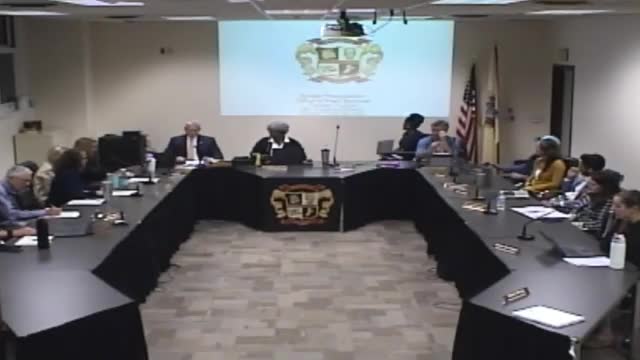Pupil services review: 784 special-education students, out-of-district tuition drives IDEA spending
October 14, 2025 | Hopewell Valley Regional School District, School Districts, New Jersey
This article was created by AI summarizing key points discussed. AI makes mistakes, so for full details and context, please refer to the video of the full meeting. Please report any errors so we can fix them. Report an error »

Pupil services leaders told the board the district currently serves 784 students with special-education services and about 250 students with 504 plans, and described in-district program growth and costly out-of-district placements that drive IDEA and tuition spending.
Paulette, the director of pupil services, said the district's preschool and K'12 special-education programs have expanded to meet rising needs in categories including autism and mild-to-moderate intellectual disabilities; small increases in classification counts can force the district to open additional classrooms to meet state code limits.
The district reported roughly 47 students in out-of-district placements. Pupil services leaders said the IDEA grant (noted on the presentation at about $892,000) covers a significant portion of tuition for those placements, and cited average out-of-district tuition ranges from roughly $57,000 to as high as $300,000 per student per year depending on program intensity. Administrators also noted several students require one-to-one nursing or other intensive supports; those costs are included in out-of-district placement budgets when applicable.
District staff described inclusive classroom models, collaborative classrooms, research-room classes and other in-district supports and said most special-education classes maintain access to electives and school community activities. Pupil services staff emphasized the district has preserved inclusion practices and invested in structured literacy training and multisensory math approaches for teachers.
Board finance committee members said the district's work to expand in-district programming where appropriate reduces long-term tuition expense and recommended planning for flexible instructional space to accommodate growing program needs. Administrators said the district will continue to pursue bringing specialized programming in-district where possible to serve students in their least restrictive environment and to reduce outside tuition expense where appropriate.
Paulette, the director of pupil services, said the district's preschool and K'12 special-education programs have expanded to meet rising needs in categories including autism and mild-to-moderate intellectual disabilities; small increases in classification counts can force the district to open additional classrooms to meet state code limits.
The district reported roughly 47 students in out-of-district placements. Pupil services leaders said the IDEA grant (noted on the presentation at about $892,000) covers a significant portion of tuition for those placements, and cited average out-of-district tuition ranges from roughly $57,000 to as high as $300,000 per student per year depending on program intensity. Administrators also noted several students require one-to-one nursing or other intensive supports; those costs are included in out-of-district placement budgets when applicable.
District staff described inclusive classroom models, collaborative classrooms, research-room classes and other in-district supports and said most special-education classes maintain access to electives and school community activities. Pupil services staff emphasized the district has preserved inclusion practices and invested in structured literacy training and multisensory math approaches for teachers.
Board finance committee members said the district's work to expand in-district programming where appropriate reduces long-term tuition expense and recommended planning for flexible instructional space to accommodate growing program needs. Administrators said the district will continue to pursue bringing specialized programming in-district where possible to serve students in their least restrictive environment and to reduce outside tuition expense where appropriate.
View full meeting
This article is based on a recent meeting—watch the full video and explore the complete transcript for deeper insights into the discussion.
View full meeting
